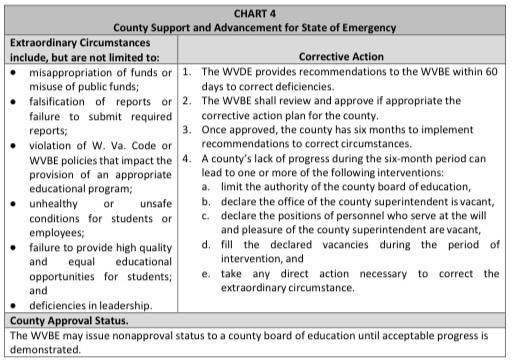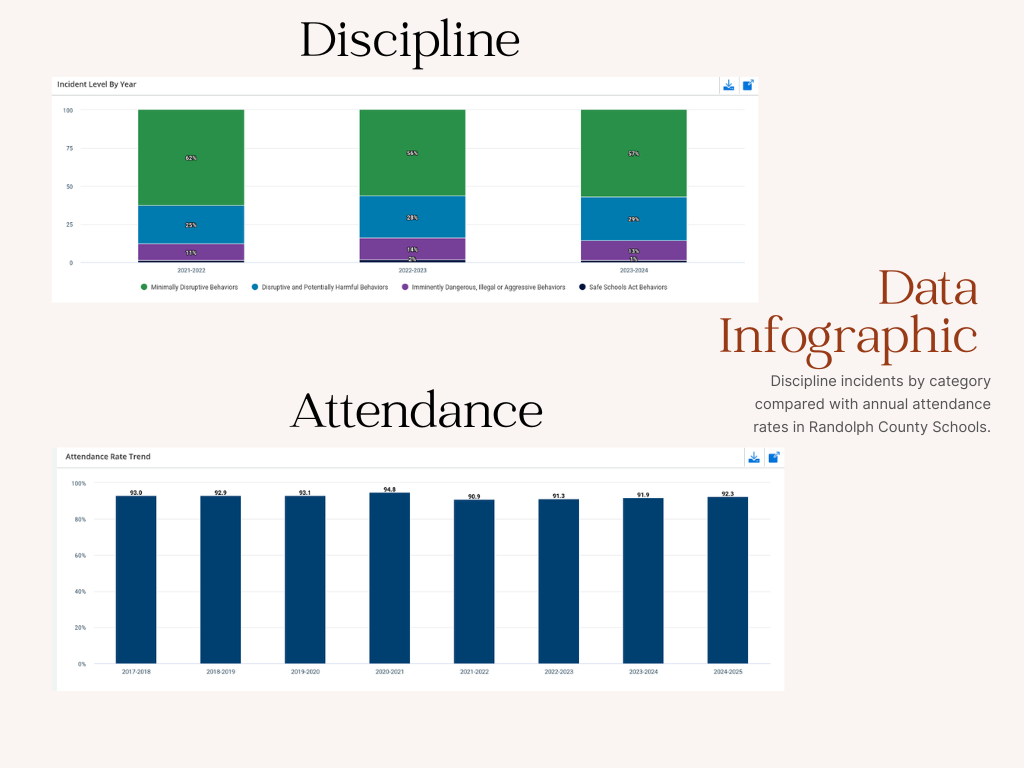On Tuesday, June 3, during a regularly scheduled Board of Education meeting, officials acknowledged a serious development: the West Virginia State Superintendent of Schools formally recommended the county be placed under a State of Emergency. The letter was received at 3:11 p.m., just hours before the meeting began, and appeared in the board’s official consent calendar under correspondence.
“This was not a surprise for many of us”, Board Member Rachel Anger said, continuing to quote a letter received by the State; “As president of Randolph County Education, I’m providing this public statement to acknowledge the addition of an emergency item to today’s agenda. In accordance with divergency provisions outlined in West Virginia Code, §6-9A-3 (H); the newly added item pertains to a formal request received from the West Virginia Department of Education urging the West Virginia Board of Education to declare a state of emergency in the Randolph County school system. This request was made under urgent circumstances and was not known at the time of the original agenda posting. Given the significant and immediate implications of this request, may have on the governance and operations of our school system, including oversight, personnel, and financial obligations. It is essential that The Board deliberates promptly and transparently. The facts and circumstances surrounding this matter constitute an unexpected event requiring immediate attention. As permitted by law, The Board is proceeding with a discussion today during today’s meeting to ensure a timely response and appropriate due diligence. We appreciate the public’s understanding and interest in this urgent development and reaffirm our commitment to transparency and responsible governance during this process.”, “That’s a somewhat long-winded explanation that we did get correspondence from the West Virginia Department of Education that we are in some form of a state takeover.”
Though brief, being mentioned in the last ten minutes of the meeting, the significance of that recommendation is enormous—and potentially historic for our district.
“Basically, what they indicated to us with the letter here is that essentially they will be adding us to the agenda that will be posted for the June agenda, where they will be making a recommendation to the State Board of Education for a State of Emergency to be rendered to Randolph County Schools”, Superintendent Dilly said, “And again, this is all contingent on the State Board approving the recommendation of the State Superintendent.”
What Does a “State of Emergency” Mean?
When the West Virginia Department of Education (WVDE) declares a school district in a State of Emergency, it means they have determined that the county is failing to meet basic educational, financial, or administrative standards—and that local leadership is either unable or unwilling to correct course on their own.
The WVDE has used this power before, but not often. It’s considered a last resort when serious problems—such as financial mismanagement, unsafe learning conditions, or violations of state code—go unresolved.
It’s important to understand that a State of Emergency is not the same as a full state takeover. While a State of Emergency signals that serious problems exist—such as financial mismanagement or leadership concerns—it does not automatically mean the local board or superintendent will be removed. Instead, it gives the West Virginia Department of Education the authority to monitor the situation more closely and require corrective action. A full takeover, on the other hand, involves the complete transfer of control from the county to the state, often including the removal of top leadership and long-term state oversight. In short, a State of Emergency is a warning—and a chance for the district to fix issues before more drastic steps are taken.
What Happens in a State Takeover?
If the emergency is officially declared, here’s what would likely follow:
Local control is suspended. The elected school board may no longer have authority over key decisions.
The superintendent could be removed. The state has the power to fire or reassign district leadership.
A state-appointed team steps in. This team would manage daily operations, budgets, personnel, and long-term strategy.
Corrective action plans begin. The county must meet specific benchmarks to regain control—sometimes over a period of years.
Regular reviews are conducted. The state monitors progress, often with annual or biannual reports to the public.
Why Randolph County?
Back in April 2025, the district launched an independent investigation into Elkins High School following complaints from parents about teachers discussing employment issues and encouraging protests during class. That probe, still unresolved as of this writing, may be part of the larger picture prompting state concern.
Meanwhile, other signs—like increased scrutiny of board decisions and recent shifts in state-district communication—suggest deeper governance or compliance issues may be at play.
One of the major financial problems Randolph County Schools is facing stems from the board’s continued decision not to close or consolidate under-enrolled schools. Maintaining multiple small schools with declining enrollment means the district must stretch its limited funding across too many facilities, leading to higher operational costs for staffing, utilities, and maintenance. This inefficiency creates a budget imbalance, where resources are spread thin and critical needs—like updated curriculum, support staff, or building repairs—go unmet. The state has repeatedly warned that without right-sizing the district, Randolph County risks falling further into financial instability, making it harder to provide quality education across the board. By refusing to make those tough structural changes, the board may have left the county vulnerable to deeper budget shortfalls—and now, potential state intervention.
What Does This Mean for Students and Families?
If a takeover happens, the day-to-day classroom experience may not immediately change, but the people making decisions behind the scenes will. Families could notice:
New rules or schedules coming from the state rather than the county office.
Changes in school leadership at the principal or superintendent level.
More oversight in areas like academic programs, funding, and student safety.
In some counties, the state has kept control for several years, slowly transitioning power back once trust and performance are restored. While the goal is always improvement, these transitions can be disruptive and raise questions about accountability and communication.
What’s Next?
No final decision has been made yet. For now, Randolph County is in a waiting period—and many students, teachers, and parents are wondering what this means for their schools.
“The way that I understand this is basically an expectation of developing a formal plan and then sort of a 6-month improvement period, in which they will potentially make some of these recommendations that you see in Chart 4. But again, I’m hoping to get additional guidance because, I’ll be honest, I have a lot of experience, but I’ve never gone down the path of a state of emergency situation in another district”, Superintendent Dilly said.

There may be more clarity about what comes next after the West Virginia Board of Education meets on June 11th, where the recommendation for a state of emergency in Randolph County is expected to be discussed in greater detail. At that meeting, state officials could decide whether to formally intervene and what specific measures they might impose—such as appointing a state superintendent to oversee the county, freezing local board decisions, or implementing immediate structural changes. For now, many questions remain unanswered, but students, staff, and families are hopeful that more information and guidance will emerge following that critical meeting.











